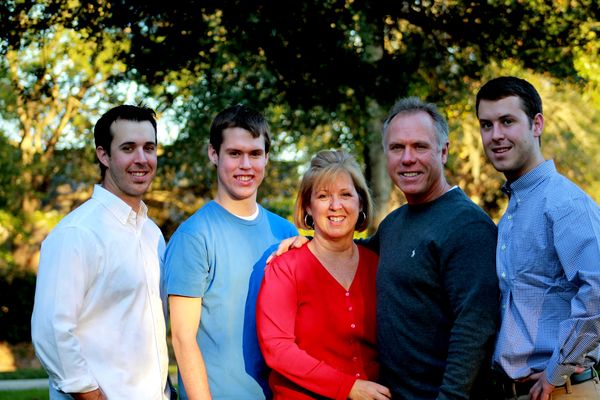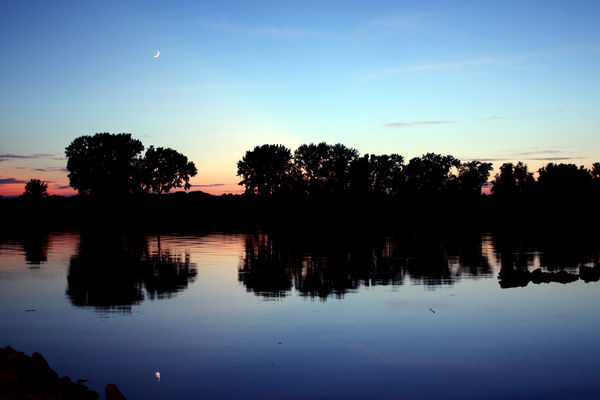Auto vs. Manual
Feb 23, 2012 10:33:51 #
mrlighteyez wrote:
First, this is my very first post onto the UHH for... (show quote)
I intend no disrespect to anyone but give coker a call. I looked at his wedding photos yesterday - he has an undescribeable photographic mind that is beyond the realm of reality. There are a few others on here that match his talent but in different fields but I have never seen wedding photos as pure as his are. I was amazed at his work.
Feb 23, 2012 10:40:55 #
Did not read the entire thread. Let me suggest using Auto ISO with your manual settings. (Canon cameras offer this function.) This setting allows the camera's exposure metering system to select the ISO, of course, but it does so in fractional steps, say, ISO 640 (instead of ISO 400 or 800.). Hence, the Auto ISO setting could adjust for varying on-site lighting quantity, given the same settings for Aperture and Shutter Speed. You may wish to experiment with the Auto ISO setting before trying it on the job.
mrlighteyez wrote:
First, this is my very first post onto the UHH for... (show quote)
Feb 23, 2012 10:57:09 #
ole sarg
Loc: south florida
Also make sure you are accounting for your light source, neon, incadescant (sp?) sun....
anotherview wrote:
Did not read the entire thread. Let me suggest us... (show quote)
Feb 23, 2012 11:13:04 #
PHFoto
Loc: Idaho
Great photos, could sit here all day, Thanks for sharing.
Coker wrote:
Thank you Jim! Here are the rest of them if you would like. http://www.cokerphotos.com/galleries
Feb 23, 2012 11:15:41 #
What a great discussion this morning with my coffee....and even a webinar to boot!....The following picture is where a light meter would have worked....I am by no means a pro....a newbie to dslr....this was shot at f/4, auto white balance AV mode 1/100 there is different light on all faces...any comments as to how I could have made it better?
I am thinking a light meter. if not that what should I have done?
I am thinking a light meter. if not that what should I have done?

Feb 23, 2012 11:20:59 #
dlinquist wrote:
What a great discussion this morning with my coffee....and even a webinar to boot!....The following picture is where a light meter would have worked....I am by no means a pro....a newbie to dslr....this was shot at f/4, auto white balance AV mode 1/100 there is different light on all faces...any comments as to how I could have made it better?
I am thinking a light meter. if not that what should I have done?
I am thinking a light meter. if not that what should I have done?
Well...remember that a light meter doesn't do your lighting for you....lol...it only tells you what the existing light IS so you can do what you need to do to make a better shot.
In this case if you thought that the lighting was too "dappled" you could have used "fill flash" to lift the shadows if you wanted.....or left them as you did.
The meter only tells you what IS and it's advantage is that it isn't fooled like the in-camera meter.
It's up to you to arrange your subjects and lighting to make the shot.
One example could have been to have a very large diffuser held by another family member to diffuse the dappled light onto them.
OR....
Just move them over until the light is uniform on all of them..
Feb 23, 2012 11:26:11 #
ole sarg
Loc: south florida
Agree.
But, what do you mean by the light meter in the camera is fooled?
But, what do you mean by the light meter in the camera is fooled?
rpavich wrote:
quote=dlinquist What a great discussion this morn... (show quote)
Feb 23, 2012 11:28:09 #
ole sarg wrote:
Agree.
But, what do you mean by the light meter in the camera is fooled?
But, what do you mean by the light meter in the camera is fooled?
You know as well as I do what I mean since you've used both for a long time.
Are you being facetious?
Feb 23, 2012 11:34:58 #
PHFoto wrote:
Great photos, could sit here all day, Thanks for sharing.
Coker wrote:
Thank you Jim! Here are the rest of them if you would like. http://www.cokerphotos.com/galleries
Use a fill flash
Feb 23, 2012 11:39:23 #
ole sarg
Loc: south florida
no, i am serious. i have found the spot meter as well as other metering modes on my canon t1i very accurate.
If I can't get real close to my subject I will take a reading off the palm of my hand or some other nearby object of similar color density. This has worked for me.
I always thought and am probably wrong, that the light that enters the camera and is closest to the sensor or film is the better of readings.
If I can't get real close to my subject I will take a reading off the palm of my hand or some other nearby object of similar color density. This has worked for me.
I always thought and am probably wrong, that the light that enters the camera and is closest to the sensor or film is the better of readings.
rpavich wrote:
You know as well as I do what I mean since you've used both for a long time.
Are you being facetious?
ole sarg wrote:
Agree.
But, what do you mean by the light meter in the camera is fooled?
But, what do you mean by the light meter in the camera is fooled?
You know as well as I do what I mean since you've used both for a long time.
Are you being facetious?
Feb 23, 2012 11:44:51 #
Ok, your kind words are greatly appreciated, but WOW... You might be a little over. After a second thought, "You might not be.!" LOL.. Just like you guys, ever photograph I take is practice. Thanks again! There will always be someone better and someone not as good. It's just art! ... And Luck!

Feb 23, 2012 11:45:27 #
Yes, I understand that the light meter tells you what the existing light is. I was thinking it may have helped me with the settings. I also agree, I could have moved the subjects forward so the light was not so dappled, or used a reflector. I am also thinking....if I would have used/and understood the histogram at this point, maybe that would have helped!. Thanks for your review....still learning.....alot to learn!, but is so fun and interesting!
Feb 23, 2012 11:53:14 #
Feb 23, 2012 12:38:39 #
Want to learn how to use your histogram? Send me one pic to bob.coker@gmail.com I will show you how to adjust your histogram for a perfect picture. Smile Bob

Feb 23, 2012 12:40:12 #
ole sarg wrote:
no, i am serious. i have found the spot meter as well as other metering modes on my canon t1i very accurate.
If I can't get real close to my subject I will take a reading off the palm of my hand or some other nearby object of similar color density. This has worked for me.
I always thought and am probably wrong, that the light that enters the camera and is closest to the sensor or film is the better of readings.
If I can't get real close to my subject I will take a reading off the palm of my hand or some other nearby object of similar color density. This has worked for me.
I always thought and am probably wrong, that the light that enters the camera and is closest to the sensor or film is the better of readings.
Ahh...thanks for explaining...I just assumed that everyone who has light meter experience as you do would be aware of the differences.
The "camera fooling" thing that I was referring to was the problem of "tonal variation" which is to say that according to the distribution of tonal values that the camera sees, it will sometimes make good decisions (medium skinned subject with medium tonal range clothing on a medium tonal range background) but it can also make horrible decisions (you've taken shots of a friend in a dark parka standing in the snow) and you get a horribly underexposed picture because the camera sees the much larger percentage of "high key" tones and tries to bring the exposure down to a more "medium" range...and you get grey snow.
So in the case of (for example) a wedding reception...you point your camera at the groom who is standing in flourescent light in his black tux against dark wood paneling.
What does the camera do? it wants to over expose because it sees this sea of dark tones...the distribution of tones is skewed towards the darker end of the spectrum.
So it ups the exposure by 2 stops above what is correct and you get a "greyish" black suit against a "washed out" panel background.
OR
The bride is standing against the same wall in her white dress....you zoom in on her shoulders and face and so you get one reading...you snap a shot...and you zoom out to include a large expanse of that dark panel wall and your meter now tells you that you need to "up" the exposure...why? Nothing has changed..the light is the same...but now the meter sees 90% dark tones and 10% light tones and tries to even them out to a medium shot.
And the brides dress goes grey....instead of the white that it is.
And you've used a meter so you know that this doesn't happen when using an incident meter; I'll only mention this for those aren't familiar with using one and may not know that a meter doesn't measure "reflected light" as the camera does...so none of these situations will fool it...it won't change it's recommended reading...the light is the light no matter what the guests are wearing or what the walls look like...
I hope I explained that clearly.
If you want to reply, then register here. Registration is free and your account is created instantly, so you can post right away.




